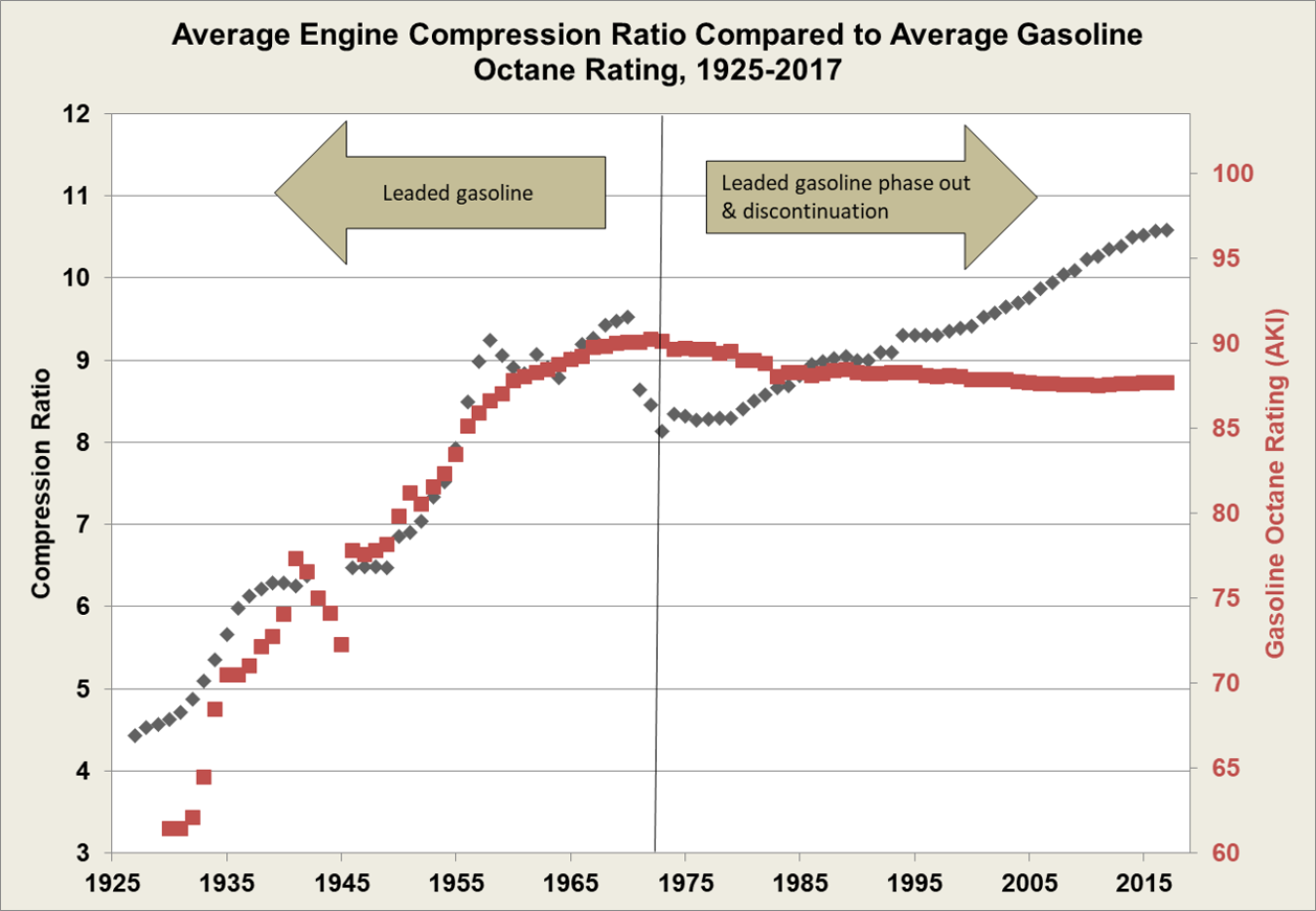From the 1920s to the 1970s, the evolution of engines and the evolution of fuels occurred in tandem. Then, the trends diverged. What changed?
August 20, 2018From the 1920s to the 1970s, the evolution of engines (measured by compression ratio) and the evolution of fuels (measured by octane rating) occurred in tandem. Gasoline octane improvement during that period (red markers in the graph below) was likely due to refinery technology improvement and the addition of lead, which guards against engine knocking. In 1973, the Environmental Protection Agency (EPA) mandated a reduction in the lead content of gasoline and eventually banned the use of lead in fuel for on-road vehicles. Since that time, oxygenates have replaced lead as anti-knock additives and the average octane rating of gasoline has been fairly constant at about 88-90 AKI (anti-knock index).
The engine compression ratio of new cars and light trucks (black markers below) increased along a similar course as octane rating from the 1920s to the 1970s. After that time, the average compression ratio continued to increase due to advanced engine design and controls, diverging from the octane trend. Higher octane levels can enable higher compression ratios, which would further improve engine efficiency.

Note: AKI = anti-knock index. Average octane rating based on refiner sales volumes and is based on a calendar year. Average compression ratio is not sales-weighted and is based on a model year.
Sources:
Frontiers in Mechanical Engineering, "A Historical Analysis of the Co-evolution of Gasoline Octane Number and Spark-Ignition Engines," January 6, 2016. http://dx.doi.org/10.3389/fmech.2015.00016
2014-17 Average octane rating calculated from Energy Information Administration, Refiner Motor Gasoline Sales Volumes, accessed August 7, 2018. https://www.eia.gov/dnav/pet/pet_cons_refmg_d_nus_VTR_mgalpd_a.htm
2015-17 Average compression ratio calculated from Ward’s Auto, "North America Light Vehicle Engines Availability & Specifications," accessed August 7, 2018. http://wardsauto.com

